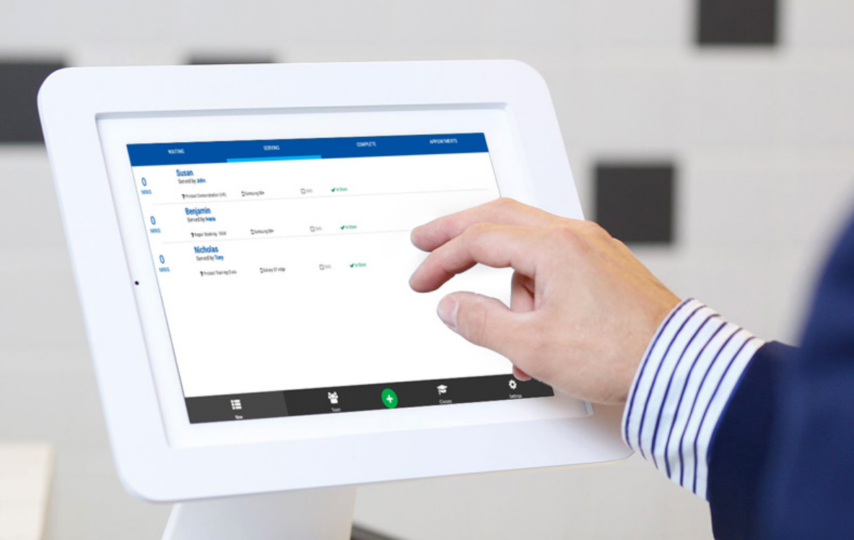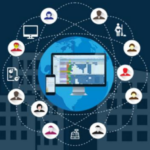In today’s fast-paced world, businesses strive to provide efficient and seamless customer experiences. Managing queues, whether in retail stores, hospitals, banks, or government offices, is a critical aspect of ensuring customer satisfaction. To streamline this process, organizations are turning to innovative technologies such as digital queue systems and queue management solutions. These solutions not only revolutionize the way queues are managed but also seamlessly integrate with other systems, enhancing overall operational efficiency. In this article, we will delve into the world of queue management and explore how these solutions work in conjunction with other systems to deliver exceptional customer service.
Understanding Digital Queue Systems
Before we dive into the integration aspect, let’s take a closer look at digital queue systems or queue management systems. These cutting-edge solutions leverage technology to replace traditional, manual queue management methods. Gone are the days of customers waiting in long, chaotic lines, unsure of when their turn will come. Digital queue systems transform the customer experience by enabling individuals to join queues remotely, receive real-time updates on wait times, and seamlessly navigate through the service process.
The Role of Queue Management Solutions
Queue management solutions play a crucial role in optimizing customer flow and improving operational efficiency. These solutions combine hardware and software components to create a comprehensive system that efficiently manages queues. From self-service kiosks for customer check-in to digital signage displaying queue information, queue management solutions enhance the customer experience while providing organizations with valuable data insights.
Integration with Appointment Booking Systems
One of the key integrations for queue management solutions is with appointment booking systems. By synchronizing the appointment booking system with the queue management system, businesses can effectively allocate resources and ensure a smooth customer journey. For example, a healthcare facility can allow patients to book appointments online, and the queue management system will automatically assign them to the appropriate queue upon arrival. This integration reduces waiting times, eliminates confusion, and enhances the overall patient experience.
Seamless Integration with Customer Relationship Management (CRM) Systems
In the realm of customer service, CRM systems are vital tools for managing customer interactions and relationships. When integrated with queue management solutions, CRM systems provide organizations with a holistic view of their customers. Customer data collected through the queue management system, such as wait times, service preferences, and feedback, can be seamlessly transferred to the CRM system. This integration enables businesses to personalize interactions, anticipate customer needs, and deliver a truly personalized experience.
Enhancing Operations through Integration with Staff Management Systems
Efficiently managing staff resources is crucial for any organization. Queue management solutions integrate seamlessly with staff management systems, enabling businesses to optimize staffing levels based on real-time demand. By analyzing data collected from the queue management system, such as queue lengths and waiting times, organizations can allocate resources more effectively. This integration ensures that the right number of staff members are available to handle customer requests, reducing bottlenecks and improving service efficiency.
Integration with Analytics and Reporting Systems
Data is a valuable asset in today’s business landscape. Queue management solutions generate a wealth of data that can be leveraged for operational insights and strategic decision-making. When integrated with analytics and reporting systems, businesses gain access to comprehensive reports, dashboards, and data visualizations. These tools allow organizations to analyze key metrics, identify trends, and make data-driven improvements. For instance, retailers can identify peak hours, evaluate customer satisfaction levels, and optimize staffing schedules based on data obtained from the queue management system.
The Future of Integration: Internet of Things (IoT) and Artificial Intelligence (AI)
As technology continues to evolve, the integration possibilities for queue management solutions are boundless. The Internet of Things (IoT) and Artificial Intelligence (AI) are poised to revolutionize the way queues are managed. IoT devices, such as sensors and beacons, can gather real-time data on queue lengths, customer flow, and wait times. This information can be fed into the queue management system, allowing businesses to dynamically adapt their operations. AI-powered algorithms can analyze historical data and make predictive recommendations for queue optimization, ensuring efficient resource allocation and enhancing customer satisfaction.
The Importance of Integration with Communication Channels
In today’s digital age, communication channels play a pivotal role in customer interactions. Integrating queue management solutions with various communication channels, such as SMS, email, and mobile apps, can significantly enhance the customer experience. For example, when a customer joins a virtual queue through a mobile app, they can receive real-time updates and notifications regarding their position in the queue, estimated wait times, and service availability. This integration ensures that customers stay informed and engaged throughout the waiting process, reducing anxiety and increasing satisfaction.
Integration with Digital Signage and Wayfinding Systems
Navigating through large facilities or complex environments can be a daunting task for customers. Integrating queue management solutions with digital signage and wayfinding systems provides real-time directions and instructions to customers. Digital signage displays can inform customers of their queue status, direct them to the appropriate service area, and display relevant information or promotions. Wayfinding systems can guide customers to their destinations, reducing confusion and improving overall customer flow.
Conclusion
In an era where customer experience reigns supreme, queue management solutions have emerged as indispensable tools for businesses across various industries. These solutions not only streamline the queue management process but also integrate seamlessly with other systems, enhancing operational efficiency and delivering exceptional customer service.
To unlock the benefits of streamlined queue management and integrated systems, contact NEMO-Q today. Discover how our comprehensive queue management solutions can revolutionize your business operations, optimize customer experiences, and help you stay ahead of the competition. Schedule a consultation and start your journey towards operational excellence.








